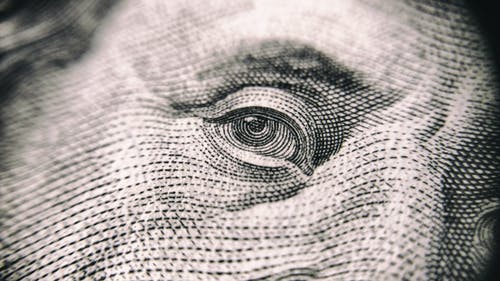An Excess of Everything, Except Moderation
Consumer culture and lack of education are leading to an economic collapse

Photo courtesy of Pexels.com
January 16, 2019
The United States has been a key instigator in creating the concept of bigger being better: bigger meals, bigger houses and a bigger income. This mentality has fostered a culture where the average American’s marginal propensity to consume is significantly higher than their marginal propensity to save; According to Sean Ross from Investopedia, “Economists and statisticians often approximate the marginal propensity to consume in the United States at between 90 and 98 percent.” As a result, Americans are accumulating destructive amounts of debt because of credit cards, student loans and mortgages. Without proper intervention, the American consumer debt bubble will burst.
The term bubble refers to when an asset’s price far surpasses its intrinsic value by a large margin. Bubbles are characterized by momentum, profit and panic. People begin to invest and other participants follow when the asset price begins to increase. During this period, there is a dramatic increase in price and investors make a pretty penny, but nothing good lasts forever. People sell at a rapid rate when asset prices drop and supply begins to far surpass demand, further plummeting the price. Although speculation exists, bubbles are extremely dangerous because they could burst at any moment, wreaking havoc on consumer’s investments, lives and the global economy as a whole.
Whether it be loans or a temporarily booming stock, the wealth effect usually takes over. People have the perception of feeling “richer,”in turn, spending more and mismanaging their budget. The people of the U.S. need a wake up call to start to get a hold on consumer debt. I believe education in the answer to curtail this pressing issue. More courses about economics and accounting should be required in schools across the country. Educating people at a younger age could set the foundation for people to manage their finances in a plausible manner.
Coined by the Beverly Hill Housewife cast member Dorit Kemsley, the phrase an excess of everything, except moderation embodies the U.S’s consumer culture. Besides ignorance, the real issue behind the U.S.’s household debt is consumerism. It has become a cultural norm to spend beyond one’s means because of societal pressure, desire and lack of education; people feel like they need to buy the newest iPhone or a car out of their budget to keep up with trends or satisfy a false “want”. A massive cultural overhaul combined with increased education could be the answer to the household debt crisis, but would be nearly impossible with the influence of businesses and personal desire.
The 2008 recession contributed to decreasing consumer debt for some years, but it has been on the rise since 2015. There is no clear answer for a single cause of bubbles, but some possible causes are the U.S.’s expansionary monetary policy and the greater fool theory.
Credit card debt has skyrocketed in the last 10 years thanks to Bankruptcy Protection Act of 2005; this Act was created as a preventative method to stop people from abusing bankruptcy laws, making it harder to file for bankruptcy. People desperately turned credit cards to pay their bills. Consumer debt decreased during the recession because banks were hesitant to lend, but rose again with the country’s economic recovery.
In addition to credit card debt, Americans are drowning in mortgages and student loans. According to the New York Federal Reserve, “The biggest contributor to the rise in household debt is growing mortgage debt, which is $9 trillion as of the second quarter of 2018.” Households feel they are gaining debt for a plethora of reasons: the cost of living is too high, college was too expensive and lack of education to pay off loans. Unlike mortgage loans, there is no clear asset that can be repossessed if student loans are not repaid, making the bubble ever more dangerous.
High school students are especially prone to feel the effects of the bubble because of their likelihood to take out student loans for higher education and apply for credit cards. Attempting to curb inflation and debt bubble, the Federal Reserve is likely to implement restrictive monetary policy with high interest rates. This means until the bubble bursts, taking out loans will be more expensive than in previous years.
This bubble is so dangerous because unlike the 2008 housing crisis, it extends to all aspects of consumer debt: credit cards, mortgages, student loans and more. The bubble bursting could result in a widespread recession, meaning a decrease in investment, gross domestic product and an increase in unemployment.






